The “Golden Fleece” myth had a “golden” historical background according to Georgian geologists.
Source - http://www.archaeology.wiki/blog/2014/12/01/source-golden-fleece-myth-indeed-gold/
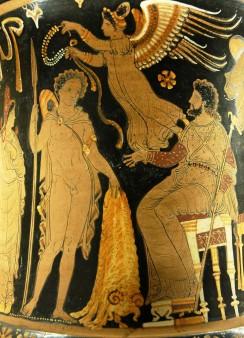
Jason bringing Pelias the Golden Fleece; a winged victory prepares to crown him with a wreath. Side A from an Apulian red-figure calyx crater. 340-330 BC. Louvre Museum.
The famous myth of the Golden Fleece, Jason and the expedition of the Argonauts had a –literally- “golden” background. This has to do with the fact that this area of the Black Sea (modern Georgia) was rich of precious metals particularly gold. There a sheepskin technique was used by the natives for recovering placer gold: the fine gold particles that flowed in the rivers were “trapped” in the sheepskins. The skins would then be dried and beaten to shake out their contents. This is probably how the image of a skin full of gold particles was generated; an image which led to the myth of the “Golden Fleece”.
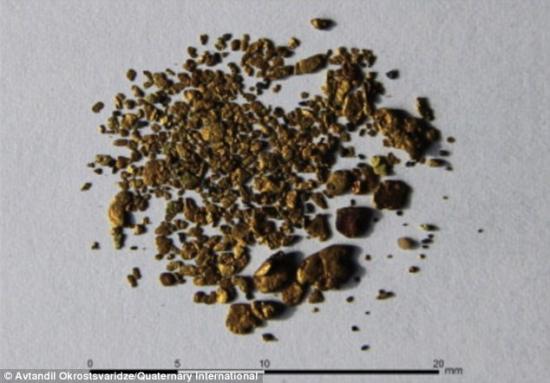
Gold grains washed from the gravel stream bed of the River Quani in Svaneti. Streams in the area are still panned by locals for gold, some of whom still use traditional methods that include sheepskin
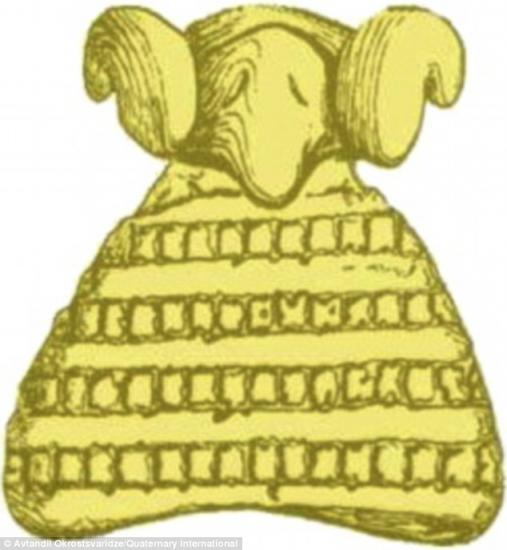
Among artifacts found in villages of Svaneti, northwest Georgia was a bronze sculpture of a bird with a ram's head that researchers say lends support that the myth of the golden fleece originated in the area
This is the result of a new research conducted by Georgian geologists, which strengthens previous assumptions that a myth was not just the product of the vivid imagination of ancient Greeks but had a real historical background.
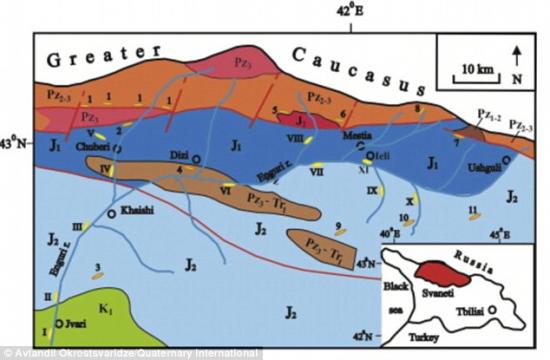
Surveys by the geologists show that gold ore veins (marked with orange ovals) and stream beds that contain rich gold deposits (marked with yellow ovals) exist today and have been replenished after historical mining
The research team, headed by geologist Dr. A. Okrostsvaridze of the Institute of Earth Sciences at the Ilia State University, published their study in the Quaternary International, conducted a modern geological research in the Svaneti region (Greater Caucuasus). They used remote sensing and analysed more than 1,000 rock and gravel samples to assess the gold content in the area. Their research “has shown that this area is the province of the former Colchis Kingdom where it was possible to obtain abundant gold from the mountain rivers using the methods unique to this region”.
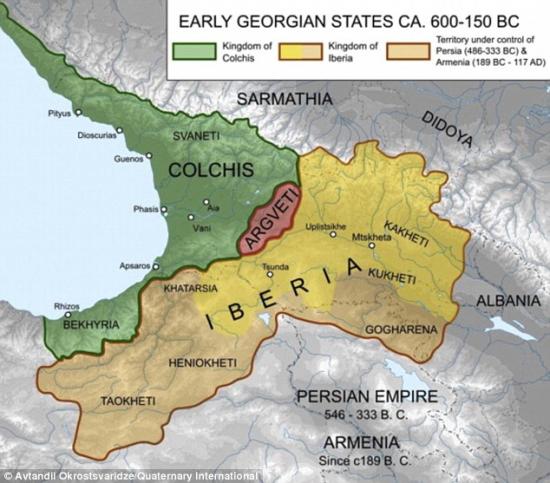
The Kingdom of Colchis was a wealthy area in what is now modern Georgia where according to Greek mythology King Aeëtes hung the Golden Fleece until it was seized by Jason and the Argonauts
Researchers also believe that expedition of Argonauts in quest of the “Golden Fleece” to the Colchis Kingdom was a real event, and that the main goal of this mission was to find out more about the gold of the time and the special technique the natives used to collect it.
A modern field investigation of the mythical “gold sands” of the ancient Colchis Kingdom and “Golden Fleece” phenomena
A. Okrostsvaridze, N. Gagnidze, K. Akimidze
doi:10.1016/j.quaint.2014.07.064
Abstract
According to Greek mythology and historical sources the ancient Georgian Kingdom of Colchis was rich of “gold sands” and the natives mined this metal from the rivers, using special wooden vessels and sheepskins. Modern geological research conducted by us in the Svaneti region (Greater Caucuasus) has shown that this area is the province of the former Colchis Kingdom where it was possible to obtain abundant gold from the mountain rivers using the methods unique to this region. We think, from our investigations, that the bedrock and placer gold contents of this region give grounds to believe that there was enough gold in this region to describe Svaneti as “the country rich of this noble metal”. After comparing the geological data, artifacts, myths and historical sources, we share the viewpoint of the Roman historian Apian Alexandrine (90–170 AD) and suppose that the myth about expedition of Argonauts in quest of the “Golden Fleece” to the Colchis Kingdom was a real event and that the main purpose of this mission was to obtain gold and sheepskin (fleece) technique of gold mining.
Though there are a lot of varients of the explanation of the “Golden Fleece” phenomena in historical literature. According to one of the theories the “Golden Fleece“ phenomena as a symbol of Colchian gold, was not confined solely to representations of actual gold mining. Other theorists saw the “Golden Fleece” as a symbol of the wealth of the Colchis, famed since antiquity for the abundance of their precious metals. The phenomena of the “Golden Fleece” according to our research, is connected with the sheepskin technique of recovering placer gold. The end result of this technique of gold recovery river gravels was a gold imprinted sheepskin, giving rise to the romantic and unidentified phenomena of the “Golden Fleece” in the civilized world.